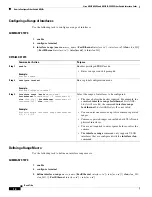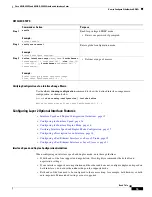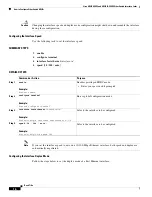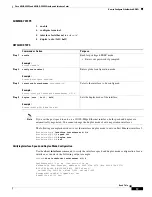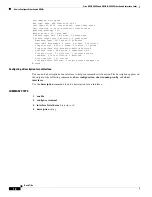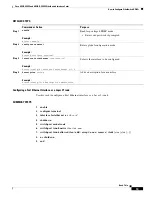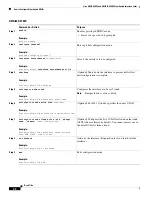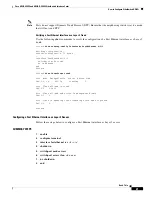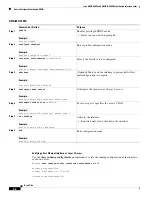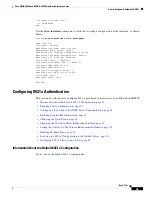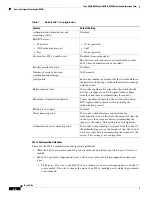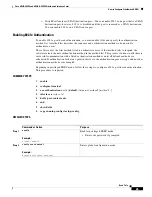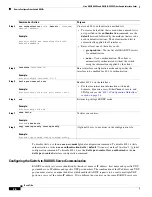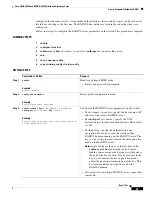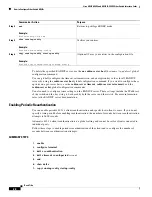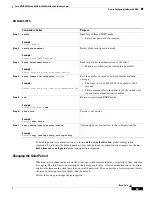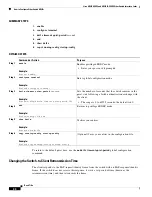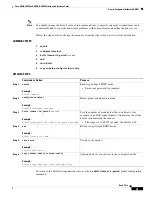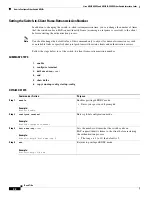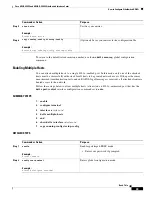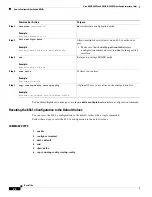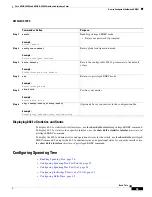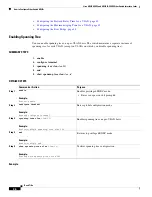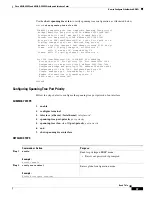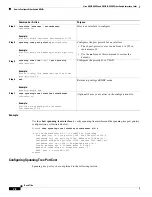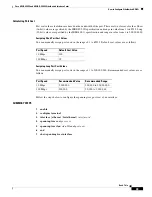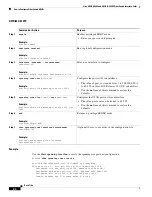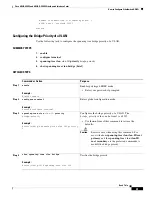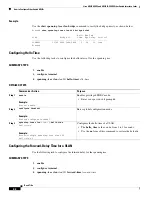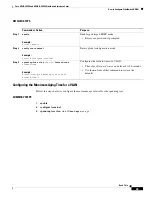
Cisco HWIC-4ESW and HWIC-D-9ESW EtherSwitch Interface Cards
How to Configure EtherSwitch HWICs
28
Book Title
To delete the specified RADIUS server, use the
no radius-server host
{
hostname
|
ip-address
} global
configuration command.
You can globally configure the timeout, retransmission, and encryption key values for all RADIUS
servers by using the
radius-server host
global configuration command. If you want to configure these
options on a per-server basis, use the
radius-server timeout
,
radius-server retransmit
, and the
radius-server key
global configuration commands.
You also need to configure some settings on the RADIUS server. These settings include the IP address
of the switch and the key string to be shared by both the server and the switch. For more information,
refer to the RADIUS server documentation.
Enabling Periodic Reauthentication
You can enable periodic 802.1x client reauthentication and specify how often it occurs. If you do not
specify a time period before enabling reauthentication, the number of seconds between reauthentication
attempts is 3600 seconds.
Automatic 802.1x client reauthentication is a global setting and cannot be set for clients connected to
individual ports.
Follow these steps to enable periodic reauthentication of the client and to configure the number of
seconds between reauthentication attempts.
SUMMARY STEPS
1.
enable
2.
configure terminal
3.
dot1x re-authentication
4.
dot1x timeout re-authperiod
seconds
5.
end
6.
show dot1x
7.
copy running-config startup-config
Step 4
end
Example:
Router(config-if)# end
Returns to privileged EXEC mode.
Step 5
show running-config
Example:
Router# show running-config
Verifies your entries.
Step 6
copy running-config startup-config
Example:
Router# copy running-config startup-config
(Optional) Saves your entries in the configuration file.
Command or Action
Purpose

